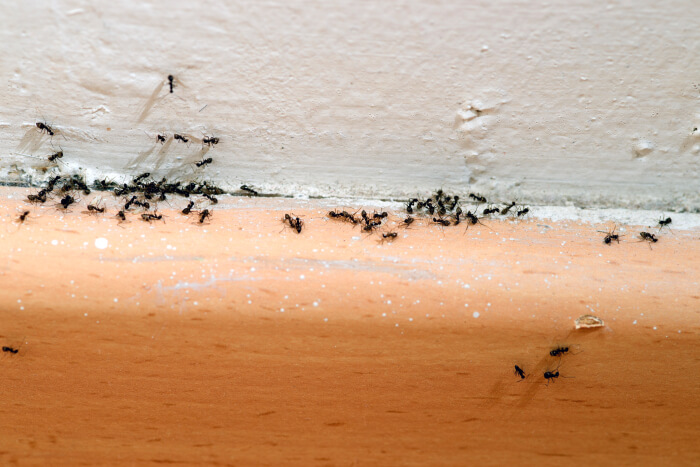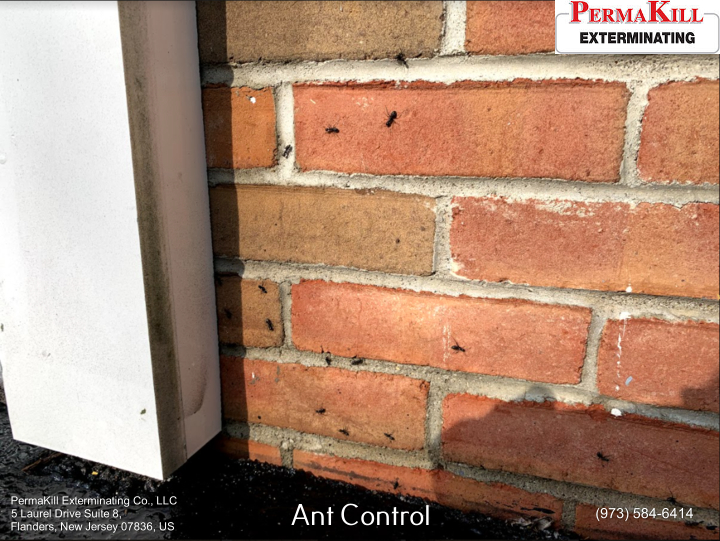


Killing ants involves more than just grabbing a can of insecticide and spraying it on them for on-the-spot termination. This will work in many instances, but your ant infestation goes deeper, literally. Hidden with the nooks and crannies of your home are nests that make up an ant colony, which can’t be eliminated by simple ant repellent spraying alone. Among other things, you have to know the kind of ant you’re dealing with before you make a move to kill them, using spray or bait.
You will definitely have to ask yourself, “How do I know what kind of ant I have and what bait to use?”. Each ant species has different characteristics and biology, which plays a big part in the best way to kill them. So it’s crucial to know what kind of ant you have in your home so that you will know the right kind of ant bait to use in eliminating your ant problem.
Determining the type of ants you have in your home will depend on several factors, such as habitat, appearance, and your geographical location. An ant’s body generally has one or two nodes, which you can describe as “humps,” on its thorax. This is the easiest way to start identifying the kind of ant you have here. Then there’s size, color, and antennas. There are ants who can bite, those who can sting, and those who can do both.
Here are some of the common ant species you will encounter and the best way to control or eliminate them:
Carpenter ants are found both indoors and outdoors. They live in homes and buildings and outside, they nest in moist, decaying wood. They may also expand into sound wood if their infestations grow. Carpenter ants usually have more than one nesting site and they have a parent and satellite colonies.
How to control them: once you discover a carpenter ant infestation, find their nests and apply a chemical insecticide directly on them, as well as along its trails and tunnels. It can be difficult to locate especially if they have multiple nests, particularly the main one. The main nest of carpenter ants is usually outdoors. Put granular or liquid insecticide to an area about two to four feet wide all around the perimeter of your house. Make sure that you use a product that is made for controlling carpenter ants. Spring and fall are usually the best seasons to apply the insecticide and liquid ant bait. Also, place carpenter ant bait station in areas where they travel.

The colonies of pharoah ants can get extremely large and they include multiple nests. A single colony can have multiple queens and houses several thousand ants. Pharaoh ants expand their colonies by budding, in which a queen and a group of workers leave the current nest to start a new colony on a new site.
How to control them: The most effective method for dealing with pharaoh ants is bait, which makes the worker ants carry the poisoned food-bait back to the nest for the rest of the ants to feed on, including the queen. This eliminates not just the foraging ants but the entire colony as well. Don’t bother drenching the nest because it doesn’t do anything for ants that expand their colonies via budding. They can always build a new nest somewhere else if their current one is being compromised. You will end up dealing with multiple ant colonies instead of just one.
Just like pharaoh ants, the colonies of Argentine ants can get so massive, with multiple queens, with each colony holding thousands of worker ants. When one colony gets eliminated, another will just take its place as it's easy for them to build new ones. This is why the only way to eliminate Argentine ants is to eradicate them all at once, both within and outside a home or building.
How to control them: Since Argentine ants share a lot of characteristics with pharaoh ants, you can apply the same ant trap methods and liquid ant bait to control and eliminate them.
They will nest just about anywhere - in walls, window frames, and insulations; in the nests of birds and mammals; under stones, mulch, logs, or debris.
How to control them: If possible, find their nests and treat them with the proper insecticide. This is just a quick solution to control a single nest and will not work on multiple colonies. Use baits to kill the ants that have entered your home. Apply insecticide around the perimeter of your house and under the siding to prevent them from crawling in. You can do this yourself, but you can also let a professional do the job.
It helps to keep the ants out of your house, certainly. You can do this by trimming back shrubbery and trees away from your home.
This is one of the most common ants in the U.S. It has two spines at the end of its thorax and its body is brown-black and pale legs.
How to control it: Follow the ant trail and identify the path they are following. Place the bait stations along that trail and make sure that you follow the instructions in the label correctly. Let the bait do its work - luring the worker ant to find the food, carry it back to their nests to feed to the queen and the rest of the ants. After a few weeks, you will be able to eliminate the entire colony.
Keep in mind not to spray indoor ants because this will just kill the workers. The other workers from the nest will simply head out to take their place. If the trail leads you outdoors to a nest below ground, drench the ant nest with the appropriate insecticide spray to kill the ants and destroy the nest instantly.
Fire ants can be found almost everywhere and infest all sorts of areas. This makes it fire ant control difficult and almost impossible to eliminate them entirely, but they can be suppressed or reduced, especially if within the areas that they are damaging.
How to control them: For lawn areas, you can use a broadcast application of insecticide, since there are multiple nests located or there's a need for wider controlling ant activity. This can also prevent ants from entering an area while the chemical is still active. For this, granular products are usually used, which are applied using a push-type fertilizer spreader, then watered.
If you're dealing only with one or two mounds of fire ants, you can treat each mound individually instead of using a broadcast application. Fire ant bait is still the most effective method for long-term ant control since this is your best shot in eliminating the entire colony.

These ants can build mounts in lawns and these can reach up to two feet tall and four feet in diameter. Field ants can also build nests in firewood and other similar piles.
How to control them: Saturate the ant mound completely with a pesticide especially made for field ant mounds. If needed, increase the amount of water so the chemical can penetrate the mound completely. Around the perimeter up, apply non-repellent insecticide, and extend up and along the foundation wall, around windows and doorways, and under the siding.
If your homemade ant bait and DIY ant killer methods are not enough to eliminate the ant infestation in your home, let a pest professional do the work for you. PermaKill Exterminating is the one to call in New Jersey and other nearby areas. They deal with all kinds of ants - sugar ant, winged ants, Argentine ant, pharaoh ant, ghost ant, pavement ant, odorous house ant, grease ant, crazy ant, thief ant, acrobat ant, and red imported fire ant.
PermaKill Exterminating also deals with bed bugs, rodents, and everything in between. Contact them now and work on making your home insect-free.